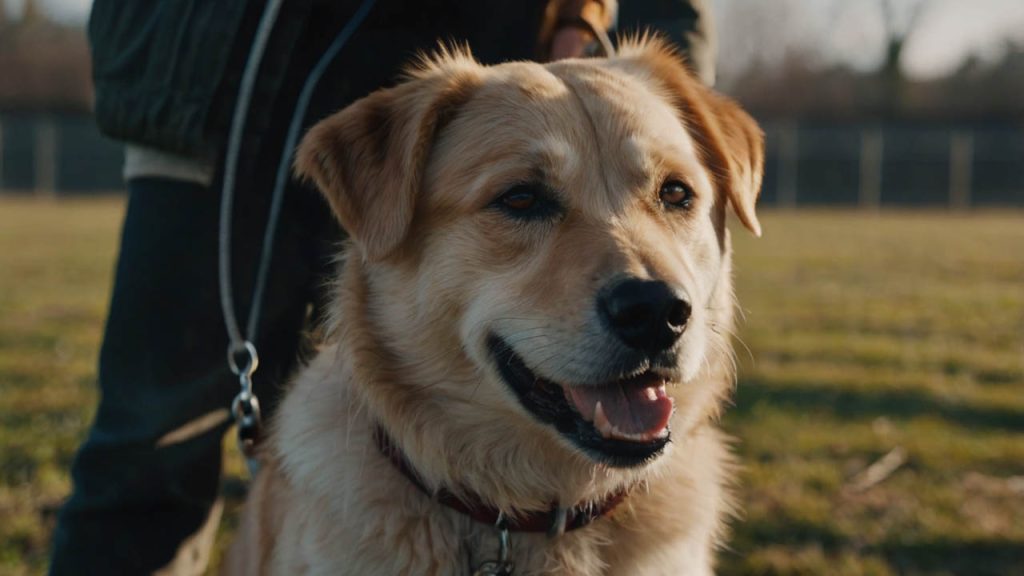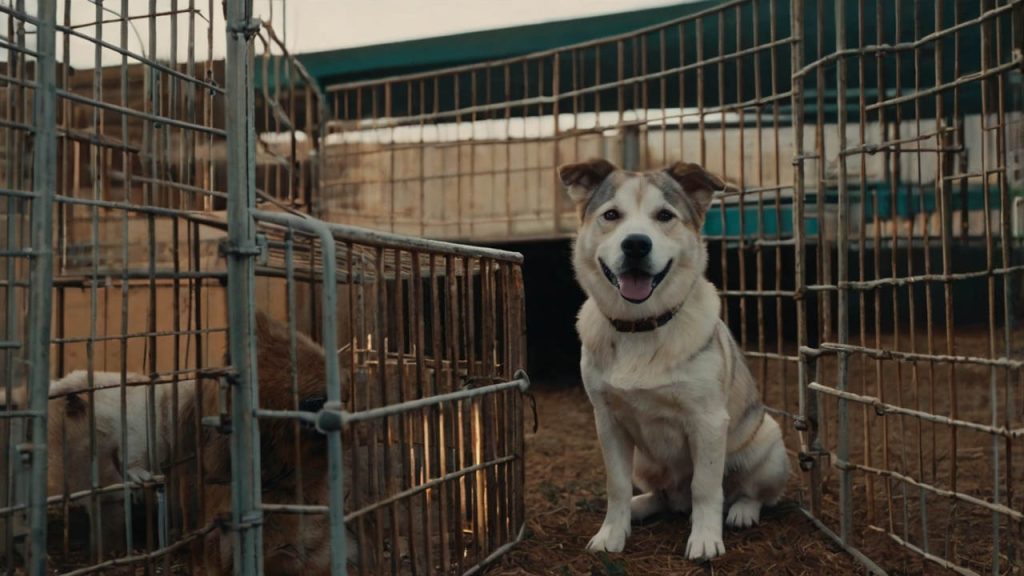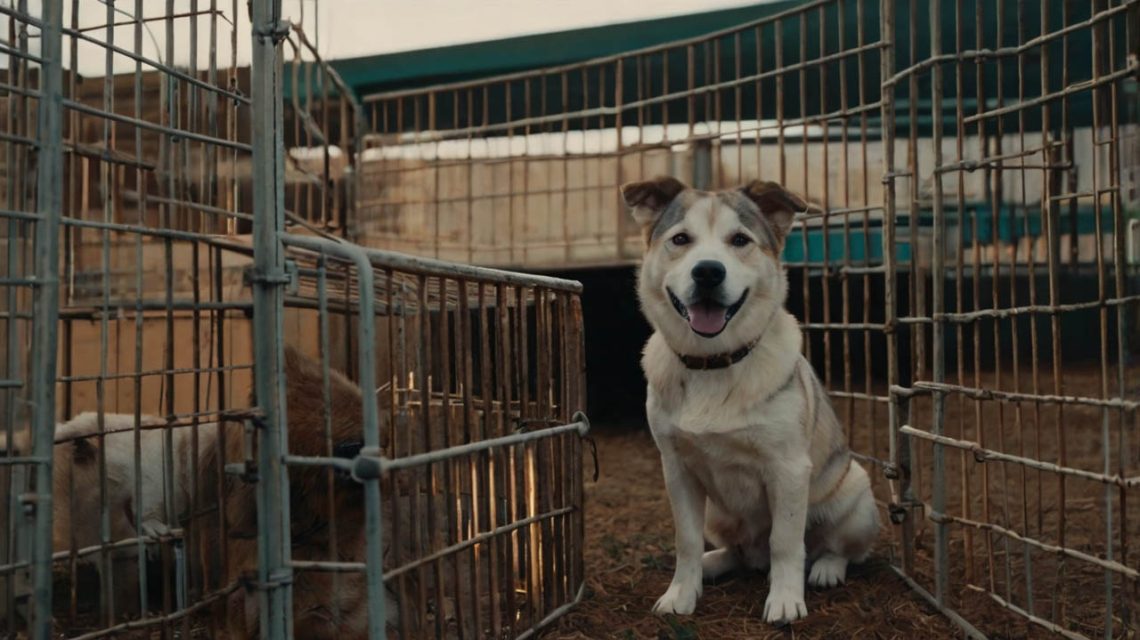Introduction: Mastering Adult Dog Kennel Training
Learning how to kennel train an adult dog represents a crucial skill that enhances both safety and comfort for dogs transitioning into new homes or routines. According to the American Society for the Prevention of Cruelty to Animals, over 3.3 million dogs enter U.S. shelters annually, with most adult dogs requiring kennel training for successful adoption and integration. Moreover, research from veterinary behaviorists at Cornell University demonstrates that adult dogs successfully adapt to kennel training within 3-8 weeks when owners apply patient, positive reinforcement methods consistently.
The necessity of understanding how to kennel train an adult dog emerges from various life circumstances including adopting rescue dogs, preparing for travel, managing post-surgical recovery, or establishing boundaries in new living situations. Studies published in the Journal of Applied Animal Behavior Science indicate that properly kennel-trained dogs exhibit 60% less anxiety during veterinary visits, travel, and emergency situations compared to untrained dogs. Furthermore, kennels provide essential safe spaces where adult dogs can decompress, reducing stress-related behaviors and promoting better overall adjustment to household routines.
Successfully implementing kennel training for mature dogs requires acknowledging their established behaviors, potential past experiences, and physical considerations that differ significantly from puppy training. Each adult dog brings unique histories—whether from previous homes, shelter experiences, or years without kennel exposure—that influence their training journey. Therefore, this comprehensive guide provides specialized techniques, practical schedules, and evidence-based solutions designed specifically for adult dogs’ psychological and physical requirements.
Why Learning How to Kennel Train an Adult Dog Matters
Essential Benefits for Adult Dogs
Understanding how to kennel train an adult dog provides critical advantages that extend far beyond simple containment. Kennels offer secure retreats where dogs can escape overwhelming stimuli like thunderstorms, fireworks, or houseguests. Subsequently, research from the University of Pennsylvania School of Veterinary Medicine shows that dogs with established kennel spaces display 45% fewer anxiety-related behaviors during stressful events.
Medical management becomes significantly more manageable when dogs accept kennel confinement comfortably. Post-operative recovery, injury rehabilitation, and chronic condition management all require restricted movement that kennels provide safely. Furthermore, veterinary professionals report that kennel-trained dogs recover 30% faster from surgical procedures due to reduced stress and controlled activity levels.
Emergency preparedness makes kennel training invaluable for responsible pet ownership. Natural disasters, evacuations, or unexpected boarding situations proceed smoothly when dogs willingly enter and remain calm in kennels. Moreover, airline travel regulations mandate kennel familiarity, making this skill essential for families who travel with their pets.

Overcoming Adult-Specific Challenges
Successfully navigating the unique obstacles of mature dog training requires understanding their established preferences and potential resistances. Adult dogs with years of sleeping on furniture or free-roaming privileges often initially reject kennel confinement. Research indicates that breaking established habits in adult dogs typically requires three times longer than establishing new behaviors in puppies.
Previous negative experiences significantly complicate kennel training for rescue dogs and those with unknown histories. Shelter dogs may associate kennels with abandonment, isolation, or punishment, requiring specialized desensitization approaches. Studies show that 40% of adult rescue dogs need modified training protocols to overcome kennel-related trauma.
Physical limitations demand special considerations when working with older adult dogs. Arthritis affects 25% of adult dogs, necessitating orthopedic support and easy-access kennel designs. Additionally, vision or hearing impairments require adjusted training techniques that rely on alternative communication methods.
How to Kennel Train an Adult Dog: Initial Setup
Selecting the Appropriate Kennel
Choosing the right equipment when learning how to kennel train an adult dog significantly impacts training success rates. Size selection proves critical—kennels must accommodate standing, turning, and lying down comfortably without excess space that might encourage elimination. Subsequently, accurate measurements of your dog’s height and length ensure proper fit without requiring multiple purchases.
Material considerations vary based on individual dog temperaments and household needs. Wire kennels provide maximum ventilation and visibility, benefiting dogs who feel less anxious with open views. Plastic kennels offer den-like security preferred by nervous dogs, while furniture-style kennels seamlessly integrate into home décor for permanent placement.
Accessibility features become essential for adult dogs with mobility concerns. Double-door designs provide flexible placement options and easier access for arthritic dogs. Furthermore, removable tops facilitate cleaning and can help extremely anxious dogs during initial training phases.
Creating an Inviting Environment
Beginning successful kennel training requires establishing positive associations before attempting any confinement. Position kennels in family areas where dogs naturally spend time, avoiding isolated locations that feel punitive. Moreover, secure doors open initially to prevent accidental closure that might frighten hesitant dogs.
Comfort elements transform kennels from bare enclosures into appealing retreats. Quality orthopedic bedding supports aging joints while familiar blankets carrying the dog’s scent create ownership feelings. Additionally, strategically placed toys or chew items make kennels more attractive than alternative resting spots.
Scent enrichment accelerates acceptance when properly implemented. Rubbing towels on your dog then placing them inside transfers familiar pheromones. Furthermore, hiding high-value treats that appear mysteriously encourages voluntary exploration and positive associations.
Step-by-Step Process: How to Kennel Train an Adult Dog
Week 1: Introduction Phase
Starting how to kennel train an adult dog begins with completely voluntary, pressure-free exploration. Scatter treats around the kennel exterior, celebrating any investigation or interest with praise. Gradually move treats closer to the entrance, then just inside, rewarding brave exploration without ever forcing entry.
Mealtime integration proves incredibly powerful during initial training phases. Begin feeding regular meals near the kennel, progressively moving bowls closer over several days. By week’s end, most dogs eagerly enter kennels for meals, though doors remain completely open throughout feeding.
Multiple brief sessions build confidence more effectively than extended training periods. Conduct 8-10 mini sessions daily, each lasting just 2-3 minutes maximum. Furthermore, always conclude sessions while dogs remain relaxed and engaged, preventing negative associations from frustration or fatigue.
Week 2-3: Building Duration
Advancing how to kennel train an adult dog involves gradually increasing voluntary time inside. Continue meal feeding in kennels while gently closing doors during eating. Initially, open doors immediately upon meal completion, then gradually extend closure by one-minute increments daily.
Enrichment activities keep dogs contentedly occupied during longer kennel periods. Frozen Kong toys stuffed with peanut butter provide extended entertainment. Moreover, puzzle feeders or lick mats offer mental stimulation that creates positive kennel associations while building duration tolerance.
Distance training begins once dogs remain calm with closed doors. Start by stepping back one foot, immediately returning with praise and treats for calm behavior. Subsequently, gradually increase distance and duration, progressing to briefly leaving the room while maintaining voice contact.
Week 4 and Beyond
Establishing reliable routines solidifies kennel training success. Implement specific kennel times coinciding with natural rest periods or household schedules. Additionally, consistent timing helps dogs anticipate and accept kennel time as normal daily occurrences rather than unpredictable confinement.
Departure practice prevents separation anxiety development. Begin with mock departures, putting dogs in kennels before pretending to leave. Furthermore, vary kennel duration randomly to prevent anticipation anxiety about absence length.
Overnight integration often represents the final challenge for adult dogs. Many resist abandoning established sleeping arrangements initially. Therefore, consider placing kennels in bedrooms temporarily, gradually relocating to permanent positions once comfort develops completely.
Advanced Techniques: How to Kennel Train an Adult Dog
Managing Resistance and Anxiety
Severe anxiety requires modified approaches when implementing how to kennel train an adult dog protocols. Systematic desensitization involves rewarding dogs for simply looking at kennels from across rooms. Gradually decrease distance over days or weeks, celebrating calm behavior at each stage without rushing progress.
Calming aids support anxious dogs throughout training processes. Adaptil pheromone diffusers create calming environments around kennels, reducing stress by up to 70% according to clinical studies. Additionally, anxiety wraps or calming supplements may help extreme cases, though behavioral modification remains the primary treatment approach.
Alternative strategies help severely kennel-averse dogs build confidence gradually. Exercise pens or baby-gated rooms serve as transitional spaces before kennel introduction. Moreover, some dogs benefit from completely different kennel styles than those associated with negative past experiences.
Troubleshooting Common Problems
Excessive vocalization frustrates owners learning how to kennel train an adult dog in shared living spaces. Distinguish between attention-seeking barking and genuine distress—completely ignore demand barking while addressing real anxiety. Research shows that responding to attention-seeking vocalizations increases the behavior in 90% of cases.
Escape attempts indicate rushed training or severe underlying anxiety. Dogs injuring themselves require immediate protocol revision and possibly professional consultation. Furthermore, addressing root anxiety causes prevents escalation to dangerous panic responses.
Elimination accidents suggest various issues requiring different solutions. Medical problems need veterinary evaluation before continuing training. Additionally, ensure kennels aren’t oversized, adjust feeding schedules, and increase bathroom breaks for senior dogs with decreased bladder control.

Special Considerations for Rescue Dogs
How to Kennel Train an Adult Dog from Shelters
Understanding the unique needs of shelter dogs requires acknowledging potential trauma histories. Many rescue dogs spent excessive time kenneled in shelters, developing negative associations. Subsequently, these dogs need extended desensitization periods using especially high-value rewards and infinite patience.
Trust building must precede kennel introduction for fearful rescue dogs. Spend several weeks establishing general confidence through positive training experiences before introducing kennels. Moreover, forcing traumatized dogs into kennels prematurely can trigger panic responses that set training back months.
Modified approaches help dogs with severe kennel aversion. Start with completely open kennels or remove doors entirely initially. Additionally, feeding all meals inside doorless kennels for weeks before attempting any closure helps rebuild positive associations gradually.
Working with Unknown Histories
Adult dogs with mysterious backgrounds require flexible training approaches. Observe reactions carefully during initial kennel exposure for signs of past trauma. Furthermore, adjust protocols based on individual responses rather than following rigid timelines.
Patience becomes paramount when training dogs with potential negative experiences. Some rescue dogs need months of gradual work before accepting kennels comfortably. Research indicates that dogs with suspected abuse histories require 4-6 times longer to develop positive kennel associations.
Professional support may benefit challenging cases. Certified trainers or veterinary behaviorists provide expertise for complex situations. Moreover, they can identify subtle stress signals and adjust protocols accordingly.
Optimizing Long-Term Success
How to Kennel Train an Adult Dog: Maintenance Strategies
Sustaining training achievements requires ongoing positive reinforcement. Continue providing special treats or toys exclusively in kennels to maintain appeal. Furthermore, avoid using kennels for punishment or isolation, which destroys carefully built positive associations.
Flexibility helps dogs generalize kennel comfort to various situations. Practice using kennels in different rooms or during car travel. Additionally, portable kennels during visits or vacations maintain familiar safe spaces in unfamiliar environments.
Regular maintenance ensures continued comfort and safety. Inspect kennels monthly for wear, sharp edges, or size adequacy as dogs age. Moreover, update bedding and comfort items to address changing physical needs over time.
Gradual Freedom Progression
Transitioning from mandatory kenneling represents ultimate training success. Begin testing reliability with brief unsupervised freedom while home. Subsequently, gradually extend free-roaming privileges based on demonstrated trustworthy behavior.
Many adult dogs continue choosing kennels as preferred resting spots after training. Leave kennels accessible as voluntary retreats even after achieving complete house reliability. Furthermore, maintained kennel comfort proves invaluable during future medical needs or emergency situations.
Age-appropriate adjustments keep senior dogs comfortable. Add extra padding for arthritic joints and consider ramps for elevated kennels. Additionally, larger door openings accommodate decreased mobility in aging dogs.
Professional Resources and Support
When to Seek Expert Help
Certain situations when learning how to kennel train an adult dog require professional intervention. Severe anxiety, aggression, or self-injury attempts need immediate expert assessment. Moreover, certified professionals provide customized protocols for challenging cases beyond typical training scope.
Medical evaluations should precede training for dogs showing unusual resistance. Underlying pain, cognitive dysfunction, or anxiety disorders may manifest as training difficulties. Furthermore, addressing medical issues first dramatically improves training success rates.
Group classes offer structured learning environments with professional oversight. Trainers help identify and correct technique errors early. Additionally, observing other dogs successfully using kennels provides powerful modeling for hesitant dogs.
Technology and Modern Training Aids
Contemporary tools assist owners implementing how to kennel train an adult dog effectively. Pet cameras with two-way audio allow remote monitoring and communication. Subsequently, owners can reward calm behavior or provide reassurance without physically returning home.
Training apps help maintain consistency and track progress systematically. Digital logs document session duration, behavioral observations, and milestone achievements. Moreover, reminder notifications ensure regular training despite busy schedules.
Calming technology supports anxious dogs during kennel training. Species-specific music, white noise machines, or calming pheromone diffusers reduce stress. Research demonstrates that multi-modal calming approaches improve training success by 65%.
Success Stories and Case Studies
Real-World Transformations
Bailey, a 6-year-old rescue Labrador, exemplifies successful adult dog kennel training despite severe initial anxiety. Extreme shelter trauma caused panic attacks near kennels initially. Through 16 weeks of patient desensitization and positive reinforcement, Bailey now voluntarily naps in his kennel daily, choosing it as his safe space during storms.
Max, an 8-year-old Beagle, needed kennel training for unexpected medical treatment. Despite never experiencing kennels previously, Max adapted within four weeks using systematic positive reinforcement. His successful recovery from surgery without complications demonstrated kennel training’s medical value.
Luna, a 10-year-old German Shepherd with arthritis, shows that senior dogs can learn new skills successfully. Modified protocols accommodating her physical limitations achieved reliable kennel comfort in six weeks. Her owners report improved anxiety management and easier veterinary visits.
Expert Professional Insights
Certified trainer Patricia McConnell emphasizes that how to kennel train an adult dog succeeds through patience and consistency rather than speed. Her experience training thousands of adult dogs shows age poses no barrier when using positive, systematic methods. Moreover, she notes adult dogs often develop stronger kennel preferences than puppies once comfortable.
Veterinary behaviorist Dr. Karen Overall stresses comprehensive evaluation before training. Her research reveals that 35% of apparent training failures stem from undiagnosed medical or psychological issues. Furthermore, she advocates integrated approaches combining environmental management, behavioral modification, and medical support when needed.
Professional trainer Ian Dunbar highlights the importance of making kennels extraordinarily rewarding. His protocols emphasize creating associations so positive that dogs prefer kennels to other resting spots. Additionally, he recommends celebrating incremental progress rather than expecting rapid transformation.
Conclusion: Your Path to Successful Kennel Training
Mastering how to kennel train an adult dog provides invaluable benefits for both dogs and owners, creating safe spaces that serve multiple purposes throughout your dog’s life. Throughout this comprehensive guide, you’ve discovered that adult dogs can successfully learn kennel training regardless of age or background when approached with patience, understanding, and consistent positive reinforcement. The journey may require more time and creativity than puppy training, but the results—from emergency preparedness to medical management—justify the investment.
Remember that every adult dog brings unique experiences, temperaments, and learning speeds to kennel training. Some embrace kennels within days, while others need months of gradual acclimation. Your commitment to positive methods, respect for your dog’s individual pace, and consistency in approach determines ultimate success.
Take action today by selecting an appropriate kennel and beginning with simple positive associations. Start by placing special treats near the kennel when your dog isn’t watching, creating mysterious rewards that appear to emanate from this new object. Most importantly, approach how to kennel train an adult dog as an opportunity to deepen communication and trust with your canine companion, knowing that your patient efforts will provide them with a valuable life skill and personal sanctuary for years to come.


